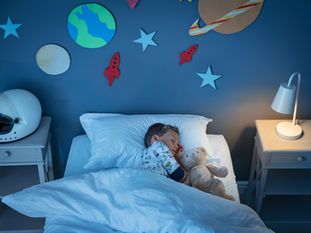
Episode 47 of the Airway First podcast is now out! You can catch this and all other episodes on Apple, SoundCloud, Podbean, RSS, Spotify, or wherever you listen to your favorite podcasts. And don't forget to check us out on YouTube!
My guest today is Dr. David McCarty. Dr. McCarty is a board-certified specialist in Sleep Medicine and a pioneer in the practice of patient-centered care for those who suffer from sleep disorders. An award-winning educator, he is passionate about empowering individuals with knowledge that restores confidence and personal agency, as each patient navigates the landscape of disease and wellness, within an increasingly fragmented healthcare system.
He is the co-creator of Empowered Sleep Apnea, an innovative cross-platform educational project combining storytelling, cartooning, scientific rigor, and quite a bit of fun, all in the name of helping individuals (and providers) navigate the fascinating but complex disorder known as “Sleep Apnea.” In 2023, the project comprises a website, a book (Empowered Sleep Apnea: A Handbook for Patients and the People Who Care About Them, co-authored with Ellen Stothard, PhD), a blog and a podcast.
You can find out more about Dr. McCarty at empoweredsleepapnea.com.
If the child isn't sleeping well, it's usually the parent that suffers. ~ Dr. David McCarty
AIRWAY FIRST Show Notes:
Empowered Sleep Apnea: www.empoweredsleepapnea.com
Sleep Heart Health Study (SHHS): https://sleepdata.org/datasets/shhs
Wisconsin Sleep Cohort (WSC): https://pophealth.wisc.edu/research/the-wisconsin-sleep-cohort/
Dunedin Study: https://dunedinstudy.otago.ac.nz/
American Academy of Sleep Medicine: https://aasm.org/
Dr. Andrew Chesson (sleep medicine)
Dr. Keith Thornton (dental sleep medicine)
Dr. Becky Andrews (naturopathic medicine)
Dr. Steven Hall (occupational medicine)
Dr. Ellen Stothard (Colorado Sleep Institute)
Long-term adherence rates for CPAP are 50-70%
WHAT IS HYPOPNEA?
By definition, hypopnea is a slowed, shallow/restricted breathing rate lasting 10-seconds or longer causing a 4% drop in saturation during sleep. Hypopnea episodes often occur along with sleep apnea events which cause the body to stop breathing completely for a few seconds until the brain tells the body to wake up.
There are two main types of hypopnea. A person can have one or both found during a sleep study and what makes it so challenging:
Obstructive Hypopnea (this is part of Obstructive Sleep Apnea syndrome): a sleep-related breathing disorder that invoiced a decrease or complete halt in airflow despite an ongoing effort to breathe
Central Hypopnea (this is part of Central Sleep Apnea syndrome): a lack of drive to breathe during sleep, resulting in repetitive periods of insufficient ventilation and compromised gas exchange
Poor sleep quality due to poor airway health, whether it is in an adult or a child, will result in poor body health and brain function.
HOW MUCH SLEEP DOES A CHILD REQUIRE?
Each one of us operates on a circadian rhythm (a 24-hour cycle that communicates to our bodies when to sleep and when to wake). While all kids are different, there is a standard guideline for how much sleep a child needs.
This sleep guideline is based on your child's age:
Newborns (0-3 months): 14-17 hours of sleep per day
Infants (4-12 months): 12-16 hours of sleep per day
Toddlers (1-2 years): 11-14 hours of sleep per day
Preschoolers (3-5 years): 10-13 hours of sleep per day
School Agers (6-12 years): 9-12 hours of sleep per day
Teens (13-18 years): 8-10 hours of sleep per day
WHAT ARE SOME SYMPTOMS OF SLEEP-DISORDERED BREATHING IN CHILDREN?
Sleep apnea in children differs from sleep apnea in adults. Daytime sleepiness tends to be more prevalent among adults, whereas behavioral problems are more prevalent among children.
According to the American Academy of Sleep Medicine, a child with sleep apnea may:
Experience prolonged pauses in their breathing lasting 20 seconds or longer at a time
Experience patterns of repeated pauses in their breathing lasting less than 20 seconds at a time
Experience related issues such as a slow heartbeat or low oxygen levels
While not all children exhibit these symptoms, the most common signs of a sleep-related breathing issue or dysfunction in children include:
Extended pauses in breathing (lasting longer than 20 seconds)
Restless sleeping
Snorting, coughing, or choking while sleeping (often causing a child to tilt their head back to breathe)
Chronic mouth breathing when awake or asleep
Nighttime sweating
Late age/stage bed wetting
Chronic sleep terrors
Poor weight gain in infants
Daytime sleepiness or trouble waking up in the evening after being in bed all night
Difficulty paying attention or ADHD diagnosis
Exhibiting behavioral problems
Depression or moodiness
The oxygen level in a child's blood may be lower due to sleep-disordered breathing. This is due to the fact that the condition can make it difficult for air and oxygen to flow into and out of the lungs. Children's lungs and hearts may be permanently damaged if this pattern continues.
Chronic sleep apnea can also lead to poor growth, lowering of the IQ by as much as 10 points, and facial development abnormalities.
WHAT ARE THE FIVE REASONS TO TREAT (EMPOWERED SLEEP APNEA)?
As discussed in the podcast, the foundation of the Empowered Sleep Apnea method is to understand the "WHY" of sleep apnea and why it should be treated. The reasons focus on how sleep apnea affects your child's life and are part of the process of taking charge of your child's sleep health journey.
Once the five reasons to treat are clear, the goals for therapy will become obvious. For example, if risk becomes a reason to treat, then the goal of therapy might be to lower the marker for that risk, which in most cases is the AHI (lower than the standard of 5). For children, lowering the event rate as much as possible should always be the goal.
The five reasons to treat are:
Risk - Sleep apnea increases the risk of dying younger of heart disease, stroke, cancer, and accidents, but the risk for a given case of sleep apnea is highly variable per person which is why this is one of the elements that is most important to discuss carefully
Snoring - The burden of snoring creates social difficulties and may cause direct trauma to tissues in the nasal passages and back of the throat
Sleep - Sleep apnea creates intermittent "fight or flight" stimulation, impacting the sleeper's ability to obtain restful and restorative sleep
Wake - When the sleep experience is broken, it can create real problems during the daytime including an inability to focus (ADHD) and drowsiness
Comorbidities - Numerous health problems, such as diabetes, migraine headaches, depression, anxiety, and bruxism, worsen under the nonspecific stress of poor sleep
SPOTLIGHT BOOK RESOURCE FOR PARENTS
This is a handbook for patients and the people who care about them.
The curriculum from Dr. David McCarty and Dr. Ellen Stothard is presented in a style understandable without a medical degree …to provide unique teaching tools suitable not only for patients, but will also benefit sleep trainees and others interested in expanding their own teaching knowledge and tools. It has benefits for patients as well as sleep disorders healthcare workers who want an entertaining, in-depth understanding of sleep medicine, especially the evolving area of sleep apnea.
No doubt you will find Empowered Sleep Apnea: A Handbook for Patients and the People Who Care About Them a much more entertaining read than the typical sleep textbook and yet will finish with additional educational tools to use for teaching, in addition to an expanded knowledge about sleep apnea.”









